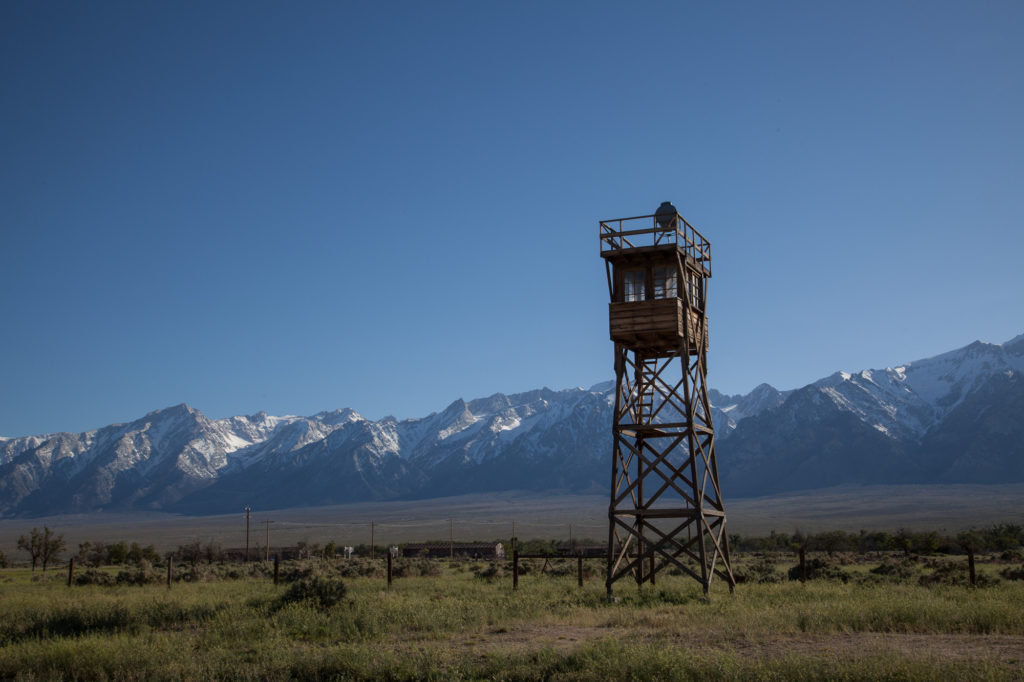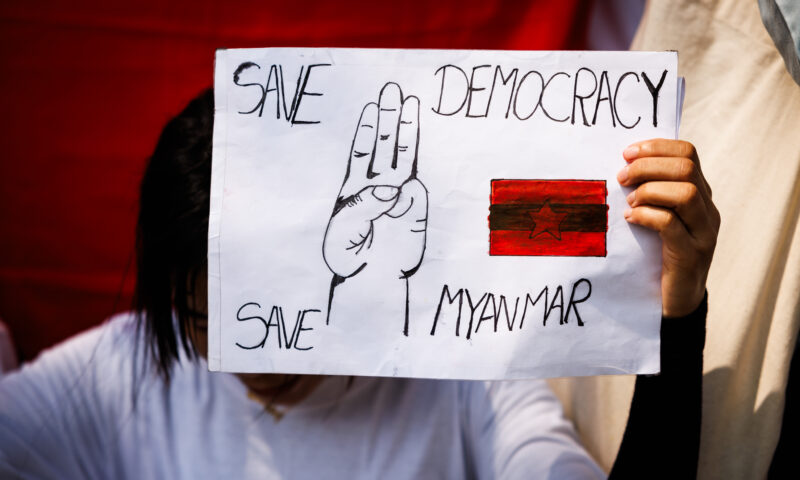The Golden State of Hate
From Remembrance to Resistance: The 48th Manzanar Pilgrimage
This year marks the 75th anniversary of Executive Order 9066, in which President Franklin Roosevelt authorized the forced removal of anyone who posed a “threat” to designated military zones during World War II.

Photo by Joanne Kim
On April 29 an estimated 2,000 people from around the country convened for the 48th annual Manzanar Pilgrimage. This year, 2017, marks the 75th anniversary of Executive Order 9066, in which President Franklin Roosevelt authorized the forced removal of anyone who posed a “threat” to designated military zones during World War II. From 1942 to 1945, over 120,000 persons of Japanese descent were imprisoned in 10 concentration camps. Manzanar was the first camp, located in an inhospitable valley along California’s Eastern Sierras.
For many survivors, the camps were a source of trauma and rarely spoken of in the decades after World War II. Activist Pat Sakamoto recalled her mother saying, “There’s nothing to remember.” Longtime activist Warren Furutani described this silence as the impetus for the search for Manzanar: “It couldn’t help but stir the curiosity of the generation that was born after [the] camp.” On December 26, 1969, Furutani and over 150 other activists and survivors made the first pilgrimage to Manzanar—and galvanized a Japanese-American civil rights movement.
In 1970, the Manzanar Committee formed to advocate for the establishment of Manzanar as a National Historic Site. It would be another 22 years before they achieved their goal. During this time, many of the Manzanar Committee members became part of the Redress Movement, which in 1988 won small reparations for the survivors of the camps and a formal government apology. Yet the pilgrimages continued. Monica Mariko Embrey, granddaughter of the late Manzanar activist Sue Kunitomi Embrey, explained, “This is a place for community, connection and building.”
The Manzanar Committee has worked to include other communities in the pilgrimage, including the Paiute tribe, which was forcibly removed from Manzanar in 1863. Recently, the Paiute and Shoshone tribes helped defend the land from a planned Los Angeles Department of Water and Power solar farm. In the years since 9/11, the Committee built strong relationships with Muslim and Arab-American communities. Asmaa Ahmed, from the Council on American-Islamic Relations, drew connections between E.O. 9066 and President Donald Trump’s E.O. 13769, the travel ban signed in January that originally targeted seven Muslim-majority countries. Ahmed explained, “The two orders are separated by a period of 75 years, but both were born out of the same culture of fear and prejudice.”
Kristin Fukushima, a Little Tokyo, Los Angeles community organizer, added, “With this new administration and the threats that [Trump] poses for those most vulnerable and marginalized—the Muslim community, immigrants, refugees and queer folks—there [are] a lot of reasons to come together and remember what we cannot allow to happen again.”
Yet many at the pilgrimage fear that camps or registries could indeed happen again, unless communities organize to prevent history’s repetition. Alan Nishio, recipient of the 2017 Sue Kunitomi Embrey Legacy Award, declared, “We are here to remember but we need to move from remembrance to resistance.” And traci ishigo, organizer with the coalition Vigilant Love, asked, “What will our community’s legacy be at the end of these four years?”
The pilgrimage program closed with an interfaith ceremony in the camp’s cemetery and an interpretation of the bon odori dance, honoring the 146 who died while imprisoned in Manzanar.

-

 Locked OutDecember 23, 2025
Locked OutDecember 23, 2025Section 8 Housing Assistance in Jeopardy From Proposed Cuts and Restrictions
-

 Column - State of InequalityDecember 24, 2025
Column - State of InequalityDecember 24, 2025Where Will Gov. Newsom’s Evolution on Health Care Leave Californians?
-

 Latest NewsJanuary 8, 2026
Latest NewsJanuary 8, 2026Why No Charges? Friends, Family of Man Killed by Off-Duty ICE Officer Ask After New Year’s Eve Shooting.
-

 Latest NewsDecember 29, 2025
Latest NewsDecember 29, 2025Editor’s Picks: Capital & Main’s Standout Stories of 2025
-

 Latest NewsDecember 30, 2025
Latest NewsDecember 30, 2025From Fire to ICE: The Year in Video
-

 Column - State of InequalityJanuary 1, 2026
Column - State of InequalityJanuary 1, 2026Still the Golden State?
-

 The SlickJanuary 12, 2026
The SlickJanuary 12, 2026Will an Old Pennsylvania Coal Town Get a Reboot From AI?
-

 Latest NewsJanuary 6, 2026
Latest NewsJanuary 6, 2026In a Time of Extreme Peril, Burmese Journalists Tell Stories From the Shadows

